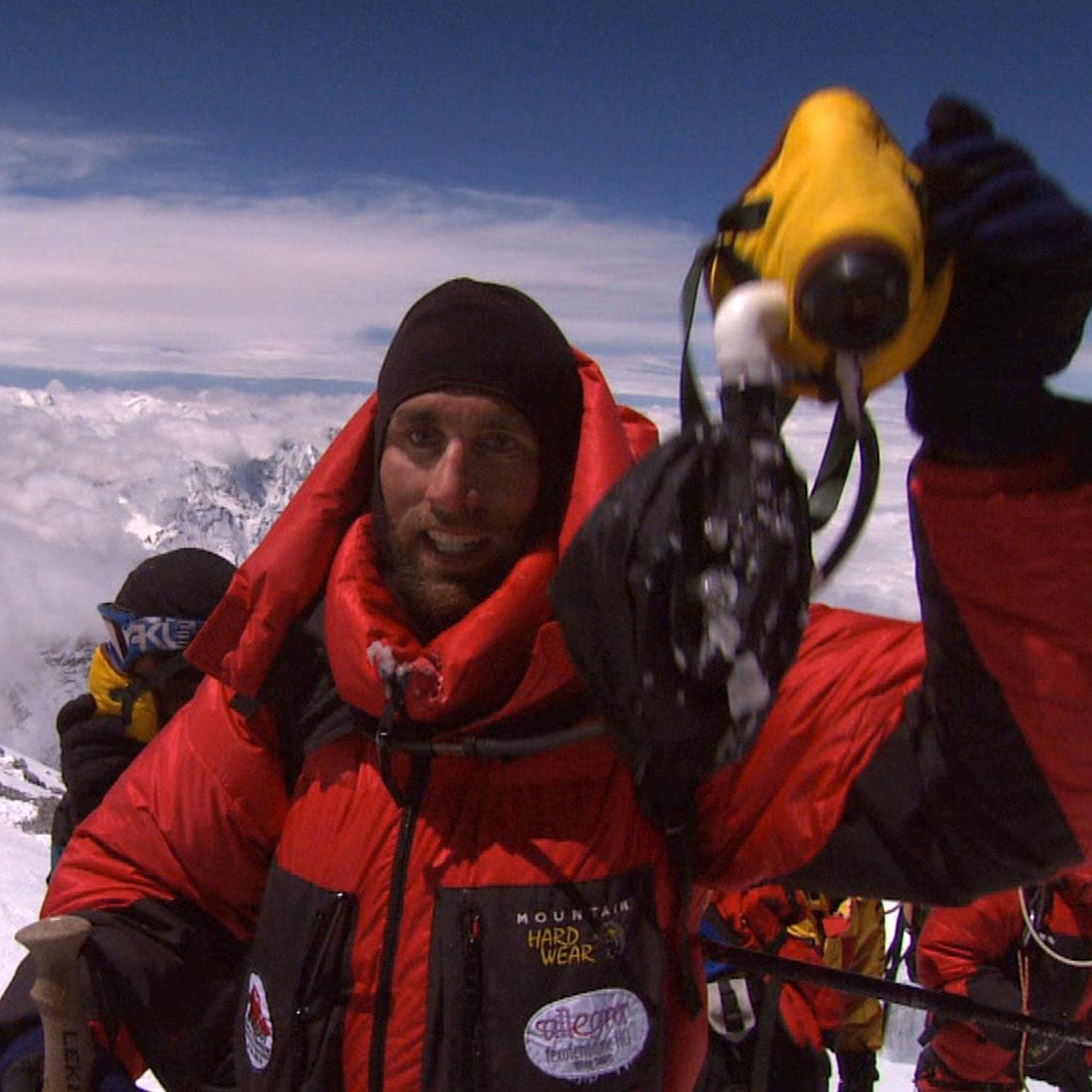May 25 marked 15 years since I became the first blind climber to summit Everest. It is still what I am most famous for, but in many ways the most influential moment of that trip happened after my descent.
When you get down from Everest, you’re worked. Your legs feel like rubber bands that have been stretched too many times, you’re coughing, you’re totally wind-burned and sunburned. I even remember my tongue was swollen. People dream of different things in those situations, but as a blind guy, I was dreaming of smooth sidewalks—just being able to walk down a smooth sidewalk and not trip over a rock.
On my way down, at the bottom of the Khumbu Icefall, I stepped over the last little rivulet of water, and someone handed me a beer. I just stood there, thinking, Wow, everything’s good. And that’s when our team leader and guide, Pasquale “PV” Scaturro, sat me down and said, “Don’t make Everest the greatest thing you ever do.”
I thought it was really inopportune timing. “What the heck? Let me go enjoy the sunshine in Colorado and lay in the park and hear my daughter,” who was one year old at the time, I thought. I just wanted to relax.
When you come home from Everest there’s a lot of fanfare. I was the grand poo-bah at our town parade in Golden. You get a lot of attention. But the whole time, I was thinking about PV’s words and trying to figure out what he meant. Soon after my return, PV and I went climbing together in Clear Creek Canyon. He was belaying me, and I asked him about what he’d told me. He said, “The biggest problem with Everest is that you finish and you get all your awards and pictures, and you put them up in your room, and then that room sort of becomes a museum—or, at its worst, a mausoleum”—where your life dies afterwards. He was telling me not to stop living just because I reached the top of the world.
The real summit is when you come home and take the gifts you earned by struggling on Everest and use them to do something meaningful.
At first I didn’t know what I wanted to do after Everest. I kept climbing and went on to finish the Seven Summits in 2008. People were writing me letters, saying, “Hey, I’ve got this great thing for you to do, I’m going to shoot you out of a cannon.” But I didn’t just want to be the blind guy finding the next stunt; I wasn’t going to live my life as the blind Evel Knievel.
Then I got a letter from a blind German lady who was living in Tibet named Sabriye Tenberken. She was running a training center for blind kids who got spit on and were seen as the scourge. A lot of times society doesn’t know what to do with blind people. In Tibet, they can’t watch the yaks or do some of the physical labor, so they fall to the bottom of the caste system. But these kids were some of the most educated kids in Tibet.
Sabriye invited me over to spend time with the kids, and I organized a climb on the north side of Everest. I took six of them up a 23,244-foot peak called Lhakpa Ri. We almost got to the summit, but it didn’t really matter. Then I got home and somebody said, “That’s really cool, but what about people with challenges right here in America?” So I started No Barriers USA with Mark Wellman and Hugh Herr, and we’ve grown tremendously. We have 30 staff members and we work with thousands of people: youth, folks with physical disabilities, veterans, as well as people who are just lost and looking for purpose. We try to give them a map for how to rebuild your life after you get beat down, which happens in lots of different ways.
���ϳԹ��� took many different forms for me after Everest. I started kayaking when I was 40, and in 2014 I kayaked down the Grand Canyon. I’m 47 now. I’ve been back to the Himalayas probably 10 times since 2001 to climb. Seven years ago, my wife and I adopted a little boy from Nepal, Arjun Lama Weihenmayer. Now I’m working on my third book, No Barriers, which is coming out next February, and pondering PV’s wisdom all over again.
Everest still feels like it happened a moment ago. I’m glad I summitted at 32; I wasn’t so young and had more perspective to fall back on when I got home. The mountains are a beautiful place of solace, you get this great adventure and adrenaline, but they can also be an addiction, a way to avoid life. You keep thinking, How do I top this? But if you’re thinking it in the wrong way—like, What can I put on my resume next?—it sends you down a very dangerous path. And I don’t think that leads to fulfillment.
The Sherpas always tell you the summit of Everest is only the “halfway summit.” “Full summit” is when you’re back down at Base Camp. I think of it like this: the summit was an incredible place, but the real summit is when you come home and take the gifts you earned by struggling on Everest and use them to do something meaningful.
What’s the greatest thing I’ve ever done? I honestly don’t know. Maybe it’s ahead.
*As told to Devon O'Neil


